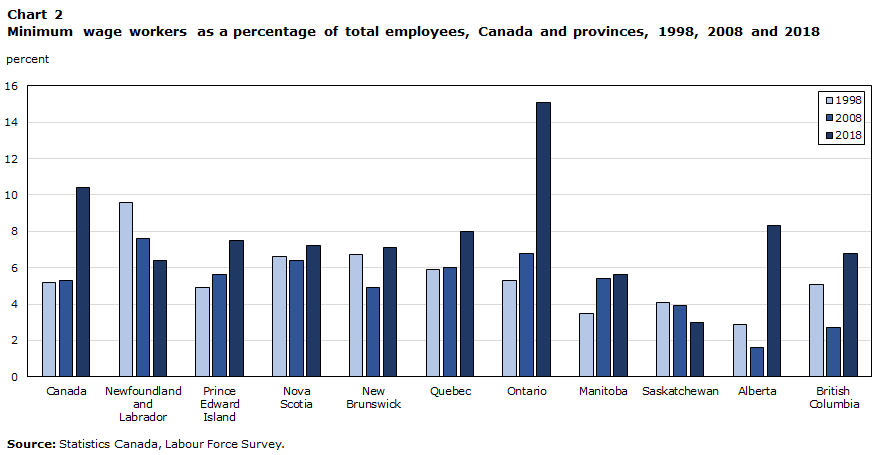New Wage Hike for Temporary Foreign Workers Aims to Boost Canadian Employment and Address Criticism of Labor Practices
The Canadian federal government is preparing to raise the minimum wage for temporary foreign workers in the high-wage stream. This new rule aims to encourage employers to hire more Canadian workers and reduce their reliance on foreign labor.
Under the current program, employers must pay temporary foreign workers at least the provincial median wage to qualify for permits through the high-wage Labour Market Impact Assessment (LMIA) stream. However, Employment Minister Randy Boissonnault is set to announce a major update. Starting on November 8, employers will be required to pay wages that are 20% higher than the provincial median for high-wage temporary foreign workers.
This change is part of the government’s broader strategy to prioritize Canadian hiring. The Liberal government has been criticized for increasing the number of temporary foreign workers and international students entering Canada. Many believe this influx is contributing to housing shortages and higher costs of living, adding pressure on the local economy. Additionally, the Temporary Foreign Worker Program has faced accusations of worker exploitation and mistreatment, raising further concerns about the program’s management.
The Israel-Hamas War Explained: A Comprehensive Overview
To hire temporary foreign workers, employers must go through the LMIA process, which involves demonstrating that they cannot find enough Canadian workers for the positions they need to fill. In Ontario, where the current median hourly wage stands at $28.39, employers will now need to offer at least $34.07 per hour to temporary foreign workers when the rule comes into effect.
The new wage requirement is expected to impact up to 34,000 temporary workers under the LMIA high-wage stream. While existing work permits won’t be immediately affected, renewals will need to meet the updated wage criteria.
Rising Reliance on Temporary Foreign Workers Spurs New Wage Rules and Stricter Eligibility to Prioritize Canadian Jobs
Recent data from Immigration, Refugees, and Citizenship Canada shows a significant rise in the number of temporary foreign worker permits issued. In 2023, 183,820 permits became effective, marking an 88% increase from 2019 when 98,025 permits were issued. This surge reflects the growing reliance on temporary foreign workers across various industries in Canada.
The wage increase aligns with the government’s ongoing efforts to tighten eligibility rules for temporary residents, including both foreign workers and international students. Along with wage hikes, recent policy changes have imposed caps on the number of low-wage foreign workers allowed in certain industries. Additionally, the government has restricted work permits in metropolitan areas with high unemployment rates, aiming to ensure more Canadians have access to jobs in those regions.
However, temporary foreign workers in the agriculture sector remain exempt from the recent rule changes and wage increases. These exemptions recognize the vital role that agricultural workers play in supporting Canada’s food supply.
As the government continues to reform the Temporary Foreign Worker Program, the focus remains on balancing the need for foreign labor with increasing job opportunities for Canadian workers. This latest wage hike serves as one more step toward that goal.







Hi my loved one! I want to say that this post is amazing, great written and include approximately all vital infos. I’d like to see extra posts like this.
Thank you so much for your kind words! It truly means a lot to hear that you found the post amazing and well-written. 😊
I’m thrilled that the content provided the vital information you were looking for. Your encouragement motivates me to keep creating valuable and engaging posts. Stay tuned—more content like this is on the way!
If there’s a specific topic you’d love to see covered, feel free to share your suggestions. I’m always open to ideas from my wonderful readers!
Wonderful blog! I found it while surfing around on Yahoo News. Do you have any tips on how to get listed in Yahoo News? I’ve been trying for a while but I never seem to get there! Thanks
Thank you for the compliment! Getting listed in Yahoo News can be a bit tricky, but there are a few strategies you can try to improve your chances:
Focus on Quality Content: Yahoo News prioritizes reliable, well-written, and timely content. Your articles should be well-researched and offer unique insights, backed by credible sources.
Submit to News Aggregators: Many stories on Yahoo News come from wire services like Associated Press or Reuters. While you might not be able to directly submit to Yahoo, getting your articles picked up by these services increases your chances of being featured.
Utilize PR Tools: Consider using press release distribution services like PR Newswire or Business Wire. Many major news outlets, including Yahoo News, pull stories from press release platforms.
Engage with Current Events: Yahoo News often features stories about trending topics. If your content is related to breaking news or major events, it has a better chance of being picked up.
SEO Best Practices: Make sure your articles are optimized for search engines. Use relevant keywords and engaging headlines, as this will make it easier for news outlets to find and feature your content.
Contact Yahoo News Editors: If you have a well-written and unique article that could be of interest to a broader audience, reach out directly to the Yahoo News editorial team. They may be open to freelance contributors or guest articles.
Build Credibility: Regularly contribute to reputable platforms and build your authority. If you’ve been published on recognized sites, that will improve your chances of being noticed by Yahoo News.
I hope these tips help! Keep pushing your content, and your efforts will eventually pay off.
Your article helped me a lot, is there any more related content? Thanks!
I’m so glad you found it helpful! 😊 Yes, I have more related content—feel free to explore the blog! Let me know if there’s a specific topic you’re interested in.
Thank you for your sharing. I am worried that I lack creative ideas. It is your article that makes me full of hope. Thank you. But, I have a question, can you help me?
Your point of view caught my eye and was very interesting. Thanks. I have a question for you.
Can you be more specific about the content of your article? After reading it, I still have some doubts. Hope you can help me.
Thank you for taking the time to read. Can you be more specific?
Thanks for sharing. I read many of your blog posts, cool, your blog is very good.
Thank you. I appreciate your kind words
Can you be more specific about the content of your article? After reading it, I still have some doubts. Hope you can help me.
Thank you for your sharing. I am worried that I lack creative ideas. It is your article that makes me full of hope. Thank you. But, I have a question, can you help me?